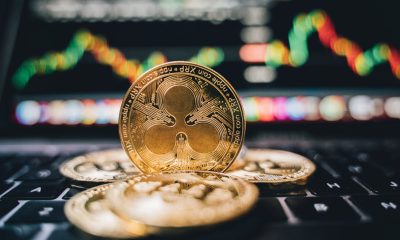Crypto
Ripple and the National Bank of Georgia Cooperate for Digital Currency
The use of XRP is not planned in Ripple’s collaborations with CBDCs, as is now the case in Georgia. The Georgian lari has been in circulation since 1995 and is a freely convertible currency. For Georgia, the lari is also a symbol of the country’s separation from Russia. Ripple launched its own platform for CBDC programs and says it is holding preliminary talks with 20 countries for state digital currencies.

With Georgia, Ripple has found another country where the national bank wants to test a stately digital currency (CBDC) in cooperation. This means that Ripple is now the official partner for CBDCs in six countries worldwide.
Ripple (XRP) has been successfully promoting the use of its technology in the creation of state digital currencies for a good two years. Now another cooperation partner, the National Bank of Georgia, has been presented in a press release. The Caucasus state of Georgia wants to test a digital version of its national currency, the lari. In its press release, the national bank calls Ripple an “international flagship company.”
In fact, Ripple can now boast a total of half a dozen countries in which CBDC pilot projects are underway. In addition to Georgia, Palau, Bhutan, Montenegro, Colombia and Hong Kong have entered into collaborations with Ripple. CBDCs are digital, state-supported images of national currencies. In the European Union, the ECB is working on an e-euro.
For smaller countries such as Georgia, a digital version of the national currency is exciting because, among other things, it could be used to process international payments faster and at lower fees than before.
If you want to find out more about the agreement between Ripple and the National Bank of Georgia, and to find the latest business news of the day, download for free the Born2Invest mobile app.
In such CBDC projects, Ripple can draw on its expertise with XRP, which fulfills similar tasks as a bridge currency
However, the use of XRP is not planned in Ripple’s collaborations with CBDCs, as is now the case in Georgia. The Georgian lari has been in circulation since 1995 and is a freely convertible currency. For Georgia, the lari is also a symbol of the country’s separation from Russia and the rouble.
Ripple launched its own platform for its CBDC programs in the spring and says it is holding preliminary talks with around 20 other countries for state digital currencies. The Ripple pilot project in the Republic of Palau was named “FinTech Innovation of the Year” by Juniper Research at the beginning of October, highlighting its low energy consumption in particular.
Conclusion: Ripple confirms its pioneering role for CBDCs
Ripple’s cooperation with central banks and governments is certainly a benefit for its image. They also demonstrate that outside the US, Ripple’s legal dispute with the SEC is not being held too high. For investors, however, the benefits of Ripple’s ambitious CBDC program are not yet really apparent, as XRP has not been assigned a role there and direct synergy effects are not discernible.
__
(Featured image by giorgi gvilava via Unsplash)
DISCLAIMER: This article was written by a third party contributor and does not reflect the opinion of Born2Invest, its management, staff or its associates. Please review our disclaimer for more information.
This article may include forward-looking statements. These forward-looking statements generally are identified by the words “believe,” “project,” “estimate,” “become,” “plan,” “will,” and similar expressions. These forward-looking statements involve known and unknown risks as well as uncertainties, including those discussed in the following cautionary statements and elsewhere in this article and on this site. Although the Company may believe that its expectations are based on reasonable assumptions, the actual results that the Company may achieve may differ materially from any forward-looking statements, which reflect the opinions of the management of the Company only as of the date hereof. Additionally, please make sure to read these important disclosures.
First published in BLOCK-BUILDERS.DE. A third-party contributor translated and adapted the articles from the originals. In case of discrepancy, the originals will prevail.
Although we made reasonable efforts to provide accurate translations, some parts may be incorrect. Born2Invest assumes no responsibility for errors, omissions or ambiguities in the translations provided on this website. Any person or entity relying on translated content does so at their own risk. Born2Invest is not responsible for losses caused by such reliance on the accuracy or reliability of translated information. If you wish to report an error or inaccuracy in the translation, we encourage you to contact us

-

 Africa2 weeks ago
Africa2 weeks agoMorocco Charts a Citizen-Centered Path for Ethical and Inclusive AI
-

 Africa9 hours ago
Africa9 hours agoSurging Expenditures Widen Morocco’s Budget Deficit Despite Revenue Growth
-

 Markets1 week ago
Markets1 week agoSoybean Market Reacts to Trade Hopes, High Stocks, and Global Price Pressure
-

 Cannabis4 days ago
Cannabis4 days agoSwitzerland Advances Cannabis Legalization with Public Health Focus
























